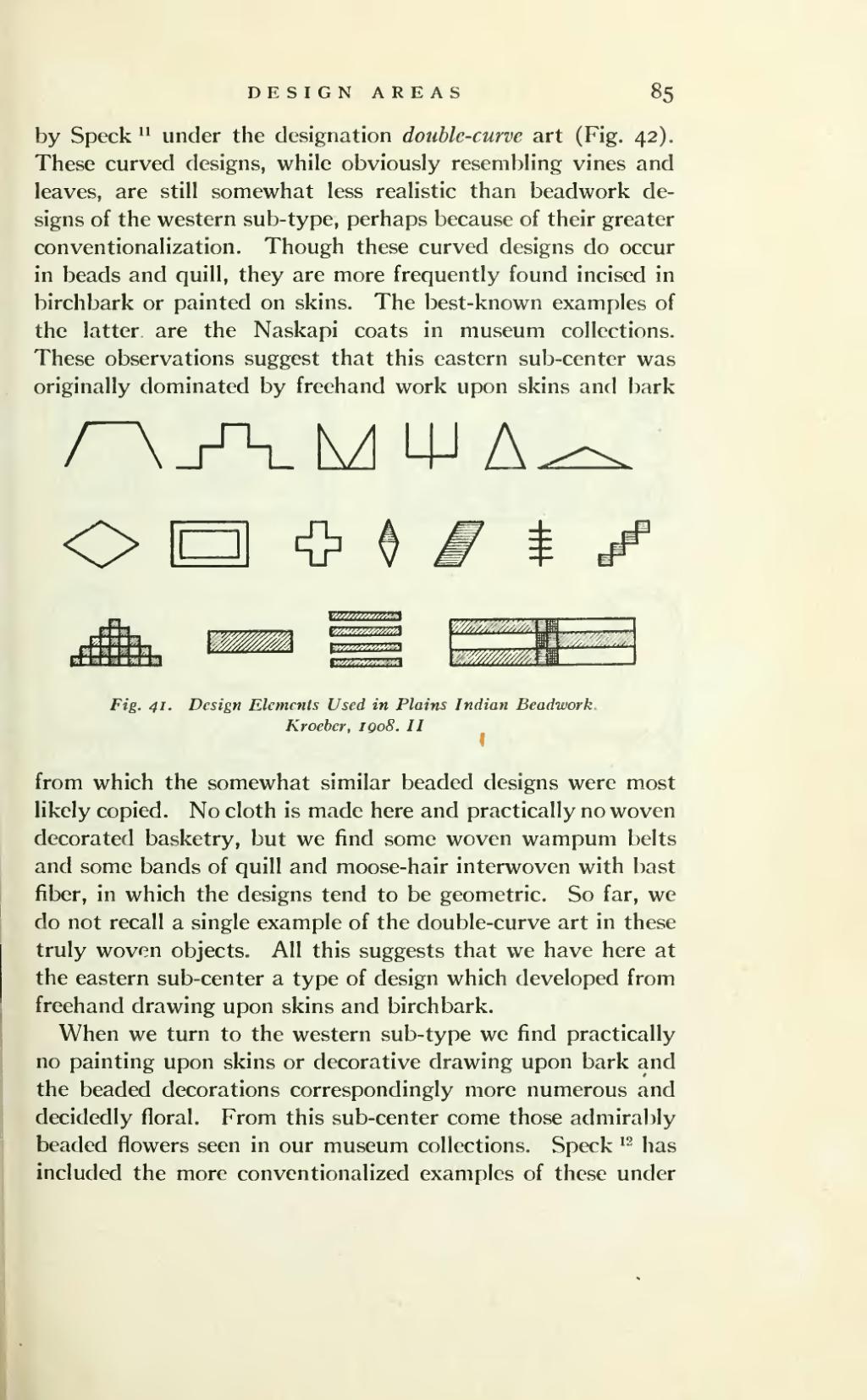by Speck [1] under the designation double-curve art (Fig. 42). These curved designs, while obviously resembling vines and leaves, are still somewhat less realistic than beadwork designs of the western sub-type, perhaps because of their greater conventionalization. Though these curved designs do occur in beads and quill, they are more frequently found incised in birchbark or painted on skins. The best-known examples of the latter, are the Naskapi coats in museum collections. These observations suggest that this eastern sub-center was originally dominated by freehand work upon skins and bark

Fig. 41. Design Elements Used in Plains Indian Beadwork. Kroeber, 1908. II
from which the somewhat similar beaded designs were most likely copied. No cloth is made here and practically no woven decorated basketry, but we find some woven wampum belts and some bands of quill and moose-hair interwoven with bast fiber, in which the designs tend to be geometric. So far, we do not recall a single example of the double-curve art in these truly woven objects. All this suggests that we have here at the eastern sub-center a type of design which developed from freehand drawing upon skins and birchbark.
When we turn to the western sub-type we find practically no painting upon skins or decorative drawing upon bark and the beaded decorations correspondingly more numerous and decidedly floral. From this sub-center come those admirably beaded flowers seen in our museum collections. Speck[2] has included the more conventionalized examples of these under
